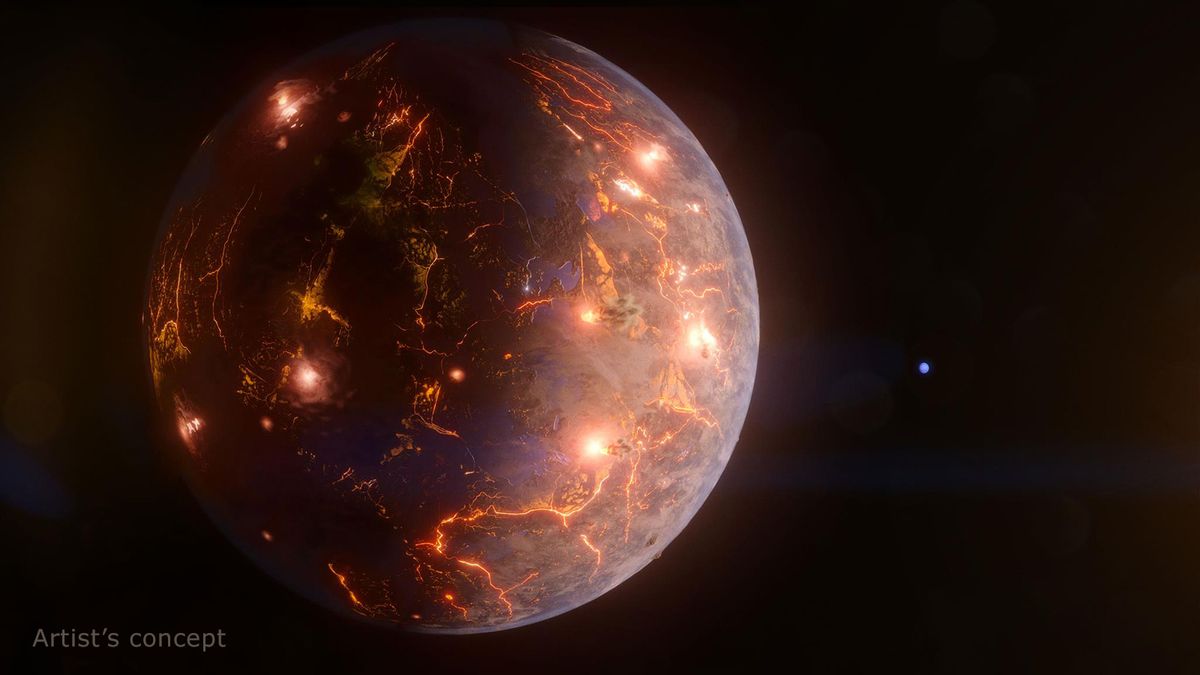Science
Related: About this forumVolcanoes may carpet surface of newfound Earth-size exoplanet
By Mike Wall published about 3 hours ago
Volcanic activity on the alien world, which lies about 90 light-years from Earth, may generate an atmosphere.

Artist's impression of the newfound exoplanet LP 791-18 d, a roughly Earth-size world that may be quite volcanically active. (Image credit: NASA’s Goddard Space Flight Center/Chris Smith (KRBwyle))
A newfound alien world about the size of Earth may be studded with active volcanoes, whose emissions could sustain an atmosphere, a new study reports.
The exoplanet, known as LP 791-18 d, orbits a red dwarf star about 90 light-years from Earth, in the southern constellation Crater. It's slightly larger and more massive than Earth, according to the study team — and it's probably much more volcanically active than our planet.
"LP 791-18 d is tidally locked, which means the same side constantly faces its star," co-author Björn Benneke, an astronomy professor at the University of Montreal's Institute for Research on Exoplanets who planned and supervised the study, said in a statement.
"The day side would probably be too hot for liquid water to exist on the surface," Benneke said. "But the amount of volcanic activity we suspect occurs all over the planet could sustain an atmosphere, which may allow water to condense on the night side."
More:
https://www.space.com/earth-size-exoplanet-volcanoes-nasa-tess?utm_source=notification
Judi Lynn
(162,595 posts)19 May 2023 / Matthew Ward Agius

LP 791-18 d, illustrated here in an artist's concept, is an Earth-size world about 90 light-years away. The gravitational tug from a more massive planet in the system, shown as a blue disk in the background, may result in internal heating and volcanic eruptions – as much as Jupiter’s moon Io, the most geologically active body in the solar system. Astronomers discovered and studied the planet using data from NASA’s Spitzer Space Telescope and TESS (Transiting Exoplanet Survey Satellite) along with many other observatories. Credit: NASA’s Goddard Space Flight Center/Chris Smith (KRBwyle)
A new exoplanet discovered orbiting a small red dwarf star some 90 light-years from Earth might be covered in explosive volcanoes.
The exoplanet – named LP 791-18 d – was discovered by NASA’s Spitzer Space Telescope and the Transiting Exoplanet Survey Satellite (TESS). It brings the number of known exoplanets orbiting the star LP 791-18 in the Crater constellation to three – two others are known as b and c.
Size-wise, d is slightly larger than the Earth, b would be about 20% bigger, c is a super-Earth, at about 2.5 times the size and seven times the mass of our planet. It’s a size differential that matters because c and d have very close orbits.
When they come near, c’s superior gravitational force tugs at d’s orbit. This, the researchers say, causes a spike in d’s internal friction, heating its interior and leading to widespread volcanic activity across its surface. This could be enough for the planet to sustain an atmosphere, although liquid water on its surface is unlikely.
More:
https://cosmosmagazine.com/space/astronomy/volcano-covered-world-spotted-90-light-years-from-earth/